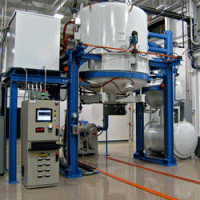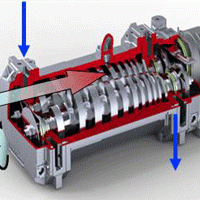Vacuum furnaces are available in both batch and (perhaps less common) continuous styles with the vast majority of furnaces in use categorized as either vertical or horizontal in orientation. In this two-part article, we will discuss the uses and features of batch vacuum furnaces and provide an introduction to continuous furnace design.
Why Use Vacuum?
Let’s briefly review why vacuum technology is so important for heat treatment. The primary reason has to do with air and the reactive constituents contained within it. Air is a gaseous mixture that contains varying amounts of water vapor, oxygen, carbon dioxide, nitrogen and hydrogen and each of these constituents of air are reactive with various metals. At room temperature these chemical reactions occur too slowly to be problematic, however, these reactions are greatly accelerated at the elevated temperatures required for heat treatment. There are changes to the microstructure of a material’s surface when a heated metal is exposed to air. The changes experienced can be either surface contamination or a thin exterior layer that is harder or softer than the interior of the part being heat treated. For example, a piece of steel will discolor when heated above about 200°C (392°F), forming a thin layer of ferrous oxide. This presents a challenge when heat treatment is necessary for applications where part cleanliness or appearance is important.







